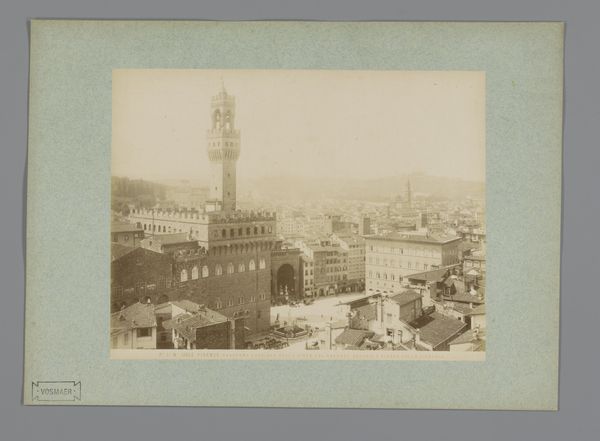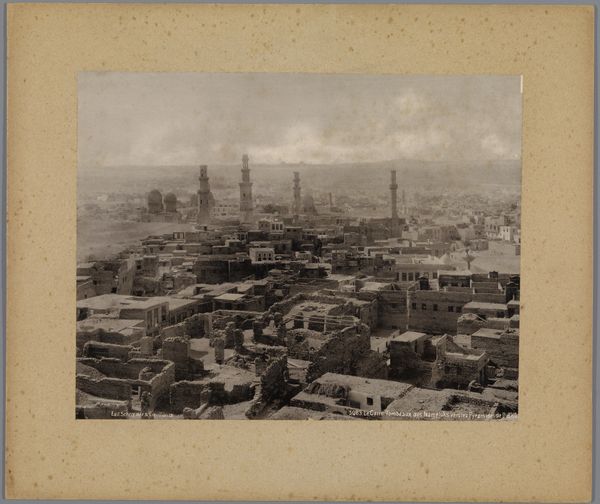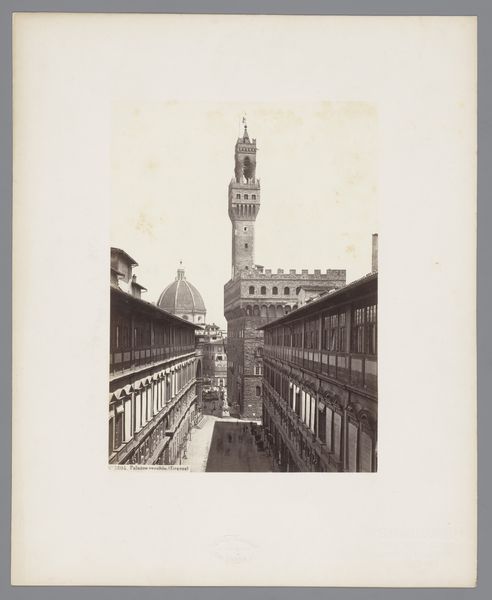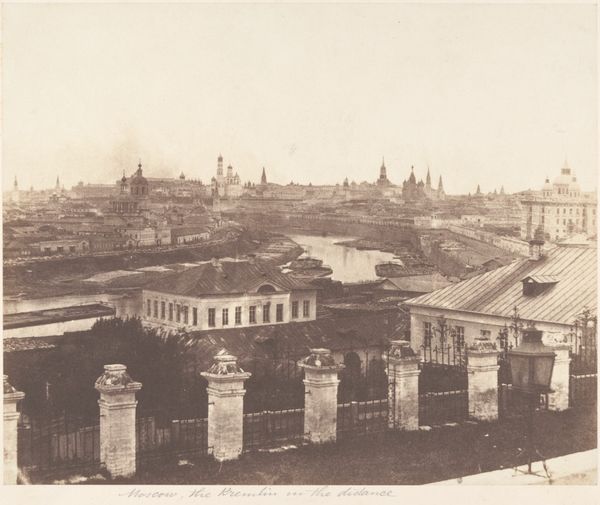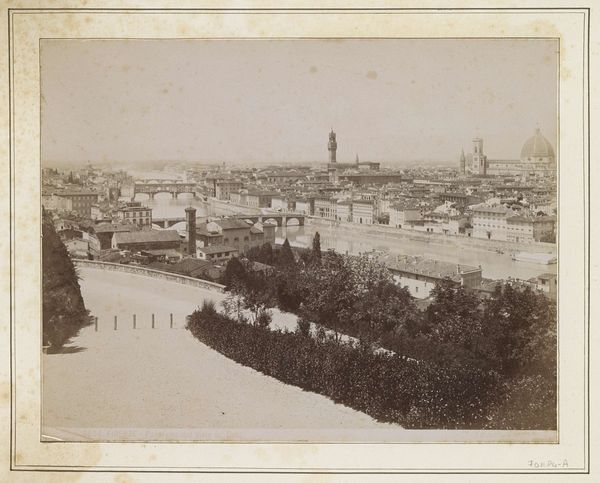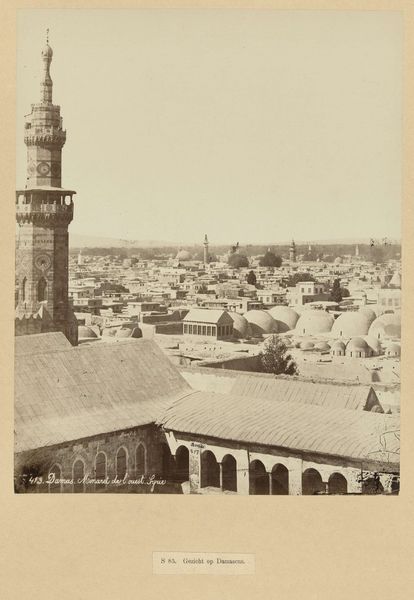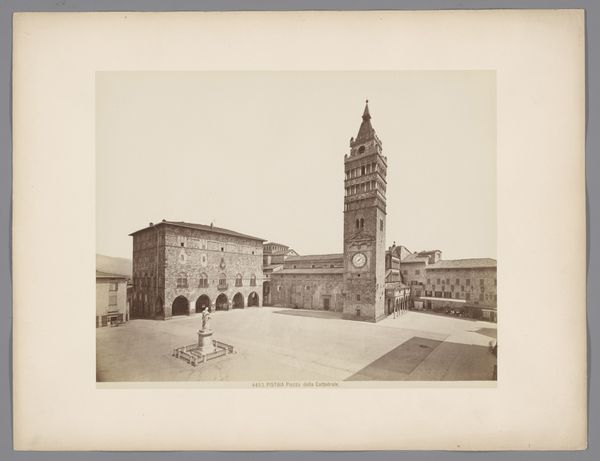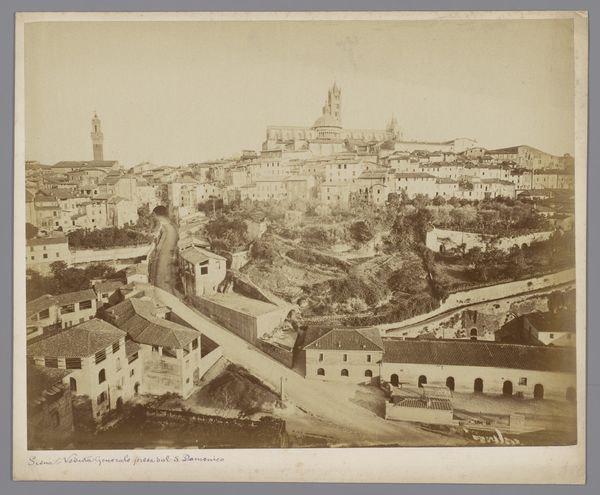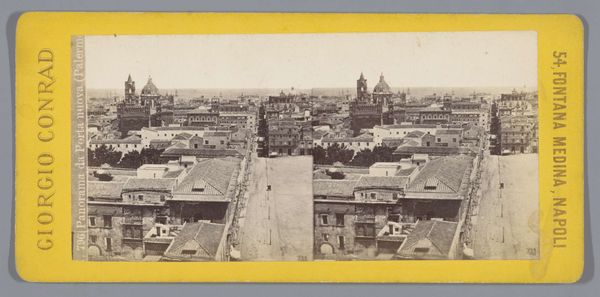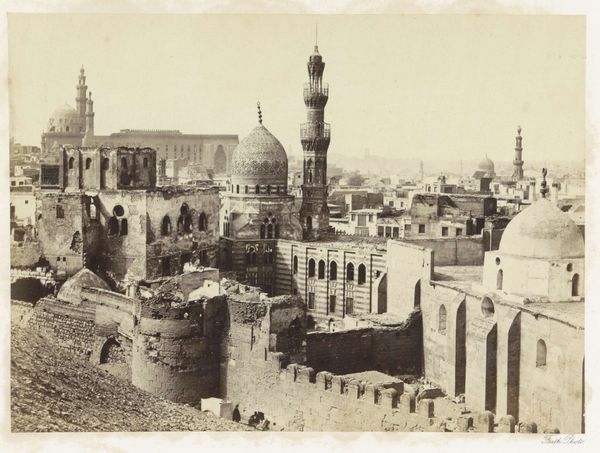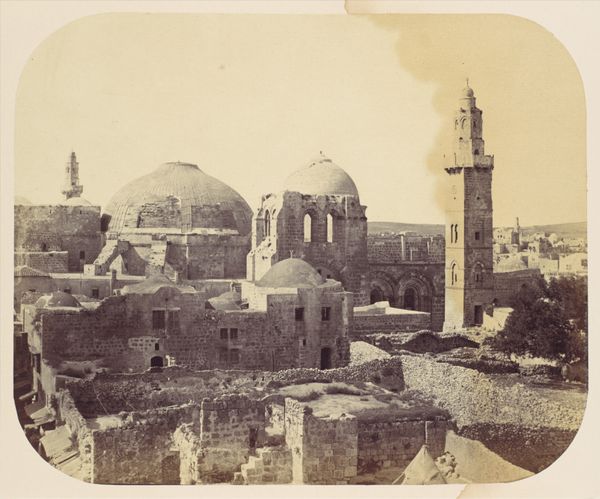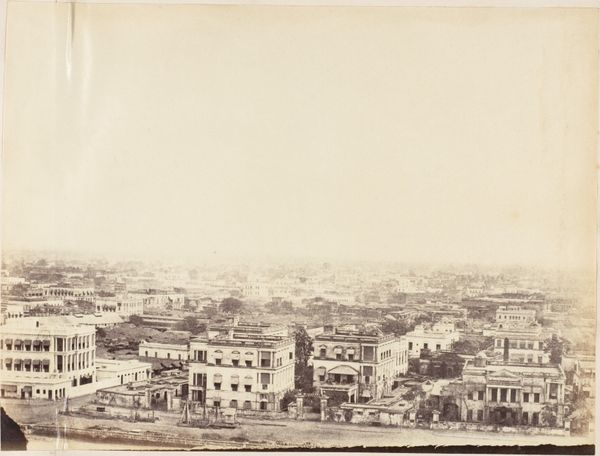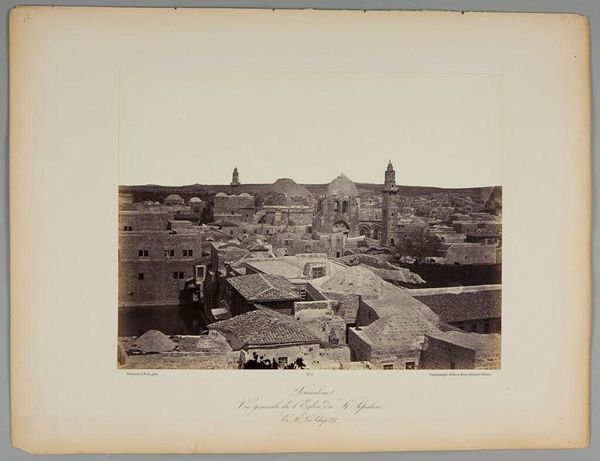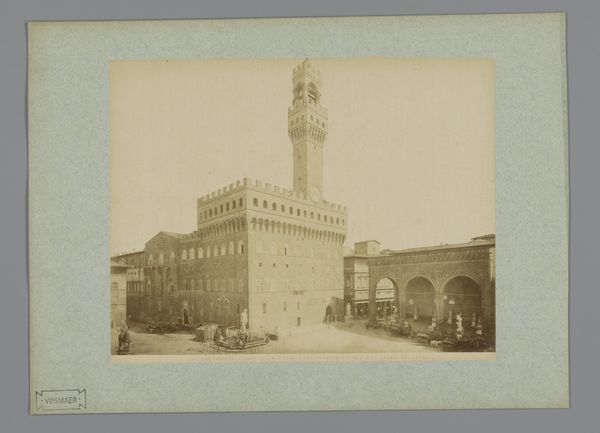
photography, gelatin-silver-print
#
16_19th-century
#
water colours
#
landscape
#
photography
#
orientalism
#
gelatin-silver-print
#
cityscape
#
islamic-art
Dimensions: height 83 mm, width 109 mm
Copyright: Rijks Museum: Open Domain
This sepia photograph offers a view of Cairo from the Mosque of Muhammad Ali, captured by Johannes Lodewijk Heldring. It’s a relatively small albumen print. In the 19th century, photography represented a breakthrough – a new way of mechanically capturing the world. The albumen process itself involved coating paper with egg white and silver nitrate, rendering it light-sensitive. This was a complex, labor-intensive process that was largely undertaken by skilled workers and artisans. The dark tones and soft focus contribute to the photograph’s dreamy, almost painterly quality. The photograph, though seemingly objective, speaks to the social context of its creation. It highlights the growing accessibility of image-making and distribution, and the rise of mass media. It also reflects the West's fascination with, and often romanticized view of, the East. Appreciating such a photograph means considering not only its aesthetic qualities, but also the intricate processes and cultural dynamics that brought it into being.
Comments
No comments
Be the first to comment and join the conversation on the ultimate creative platform.
